Much has been written on the web about the closure of San Francisco’s The Latitude. But what was it, exactly?
Now that it’s over I’ll be posting a series on this blog that will include major spoilers for those who missed out. While I was sworn to secrecy at the time, I want to stress that these secrets had an expiration date. Yes, the website still claims that The Latitude is “temporarily closed,” but given the fact that they’ve posted an epilogue and started selling various pieces on eBay, the closure is clearly permanent.
Additionally, I recently confirmed with the creator of The Latitude via email that posting a walkthrough online would fine.
That said I’ve been informed that a third party now has a lease on some of the space(s?) and may be running The Latitude under another name and format. So if you want to avoid potential spoilers for this new endeavor, stop reading now.
For my part I was invited to The Latitude by a local artist — my “ascendant” in Latitude lingo — and I only experienced the final two and a half months of what was a multi-year endeavor. There were parts that I won’t cover because I never directly experienced them; some of this is documented in the official epilogue.
So, what exactly was The Latitude? Let’s start at the beginning of the experience.
The Invitation
A friend asks if you can keep a secret. You answer in the affirmative. They hand you a small black envelope with the words “Absolute Discretion” embossed in it. Inside is an all white credit card, the numbers printed on the front all zeros. On the back is a secret password just for you, along with instructions to visit thelatitude.com and enter your secret code.
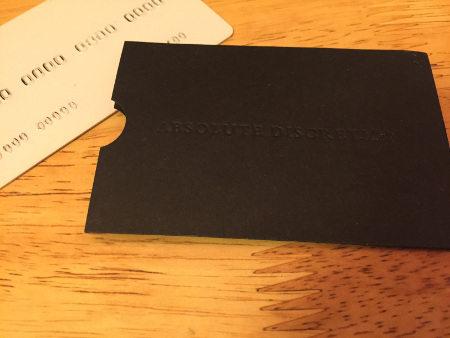
Upon entering the website, you’re asked to schedule a visit to a certain Mission District address. You’re told that you only have a five minute window to enter after your scheduled time, and that your goal is to retrieve “the signal.”
Your Appointment
Eventually it’s time for your appointment. At that address is a door next to a small card swipe entry system. The card reader has The Latitude’s hexagonal logo printed on it so you know you’ve come to the right place. You swipe your card and push the door open.
Behind the door is a black curtain. After pulling back the black curtain, you’re greeted by this:
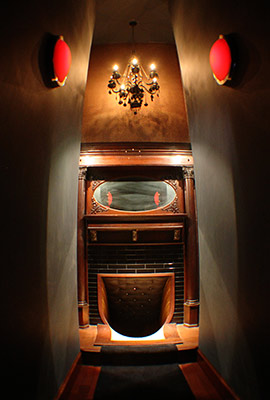
There’s a pleasant smell in the air. The two red lights on the walls are fading in and out, timed to a sound effect making a somewhat ominous “VOOM… VOOM…” sound.
Most curious is what’s inside the mantle in front of you. Where you might expect to find a fireplace is the entrance to wooden slide. It curves in the middle so you can’t see where it’s heading.
This is the entry to the “Flux Chamber.” Seeing no sense in turning back now, you decide to take the plunge and go down the slide.
Reality?
Let me stop for a moment and interject. Yes, everything I’m telling you really happened. In real life. It was part of a now-defunct project by a situational design studio called Nonchalance. If that name rings a bell it’s because it’s the same studio that was behind The Jejune Institute, which was also known as “Games of Nonchalance.”
At the end of The Institute, a pseudo-documentary film about The Jejune Institute, The Latitude’s URL and logo appear briefly on the screen.
I was one of the 250 or so attendees at the Socio-Rengineering Seminar in 2011, an event that officially marked the end of The Jejune Institute. After the seminar someone asked Nonchalance’s Jeff Hull the obvious question: what’s next? I don’t remember his exact words, but he sort of hesitated before answering that he was working on an “automated house.”
Back to that slide.
Down The Rabbit Hole
The slide curves down and around slowly taking you to a small basement room. On the right is a ticket window with frosted glass with a mannequin behind it. On the left there’s three doors, each with a small tablet computer next to it. And directly in front of you is another tablet, making a pinging sound and flashing a red oval.
Next to the tablet is a ticket sticking out of a slot. You take the claim ticket, which tells you to open the cabinet next to you. Inside the cabinet is a set of instructions: take your purse, backpack, and everything in your pockets and place them in the box inside the cabinet. A strange request (what is this, the TSA?) but as you’ll see next it’s for your own safety.
Now one of the tablets next to the three doors starts pinging and flashing. Sure enough, the door is unlocked. You open it and walk in, only to find (what else?) another curtain. So you close the door, walk behind the curtain and discover infinite blackness.
It’s completely dark.
You start patting the walls, feeling your way around. Everything is covered in a thick layer of carpet. As you move around through the darkness, the passageway gets smaller and smaller. You hear faint music playing. The tunnel becomes so small that you’re crawling around on your hands and knees, having flashbacks to your elementary school trip to the Tactile Dome at the Exploratorium.
Eventually you see a light at the end of the tunnel, obscured by another black curtain. Upon crawling inside this new space is a library of sorts, a small room where the walls are lined with books.
You sit down on the single cushion in the middle of the room and face a small podium. On the podium is a large book. You open it, flip through a couple of pages, and suddenly the book starts “reading itself” to you.
A hidden projector above displays an animation on the book and a woman’s voice reads you a story called “The Fable”. The story concerns a city that decided to fence itself off from the outside world, and a group of twelve citizens who made a tunnel through the wall for themselves.

After the fable you crawl out another opening opposite from where you came in. Now you’re in a lounge area with black leather sofas. Across from the sofas is a bar with several glasses along with a pitcher of water. You might chose to help yourself to a sip of water. But before doing so, you look at your ticket which instructs you to make a phone call.
The lounge — you’ll later come to find it’s known as the Rathskeller Lounge — has what looks like a typical 1980’s office phone but it only has one button where the keypad should be. You pick up the handset and push the button. A voice tells you what to do next. So you walk over to the cubbies next to the bar and open the one corresponding to the number on your claim ticket. Inside your belongings are there as promised. You take them and walk upstairs and exit the building.
There’s a small metal plaque embedded in the sidewalk just outside the front gate. It has four numbers on it. They’re the last four digits of a phone number written on the back of the claim ticket. You call the number and get instructions on where to go next, which is a couple blocks away. Once you’re there you find another hexagonal plaque in the sidewalk. You call the number from earlier with a new code and another recording tells you where to go once again.
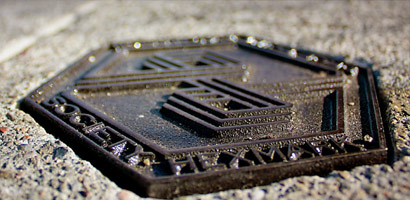
Depending on the time of day you’ll either be sent to one of two bars, The Sycamore or Gestalt. Either way you give your claim ticket to the bartender who then hands you a special coin. You’ll later come to find that this coin is pronounced “kwan.” A text message tells you to head to another address in The Mission.
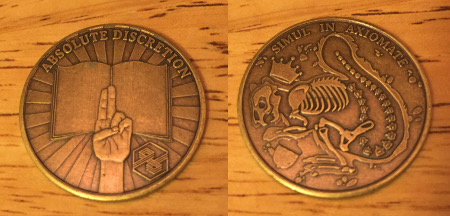
After walking a couple blocks you find the address, enter the door code (provided by another text message) and walk up a flight of stairs to find a second key card entry sporting The Latitude’s logo.
Den Arcadia
You swipe your card and walk into a small room with trippy lighting and beautiful murals on the walls. In the middle of the room there’s four old school arcade games. This room is known as “Den Arcadia.” One of the arcade machines — Atari’s Tempest — has an unusual looking coin slot which accepts your special coin.
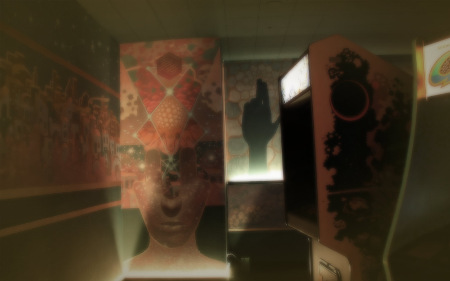
You put in the coin and start playing the game. The game of Tempest plays normally at first, but after a moment the game glitches out and a mysterious blue face appears.
This figure is named Quas (also spelled Kwas or many other variations) a human mouth with rabbit-like ears, who speaks in a gruff robotic voice. He offers some vaguely scolding words before telling you the signal, then warns you to leave and go home to your “glowing boxes” to enter the code.
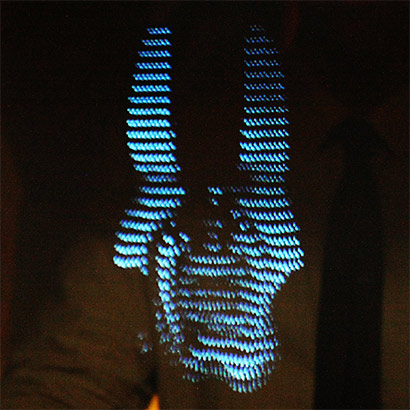
Glowing Boxes
Once you’re home at your computer you visit the website, enter the code (and have to wait 90 minutes for some reason) before you’re presented with a video from Professor Walter Kinley. In the video Kinley welcomes you as a “compeer” into The Latitude Society. Then in a montage he leaves his room at the Hyatt Regency, gets on a boat, and sails away.
From there you’re asked to come up with a moniker (or username) for yourself before entering a social network of sorts. The website had a dizzying array of options, including an online forum, a store where you could purchase merchandise, a calendar with meetings you could attend, and various small activities called “Jaunts.”
More photos and the video mentioned above can bee seen on the now publicly available Book One recap page. (Update: there’s a backup of this recap on Archive.org.)
Stay tuned for next time, where I’ll discuss “Book Two” of The Latitude.
